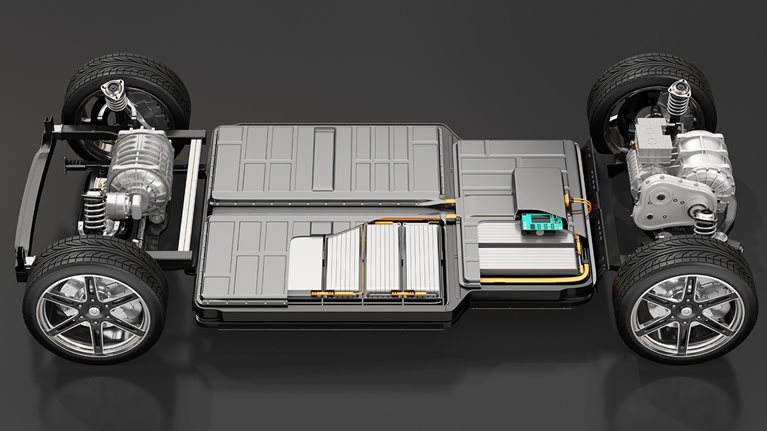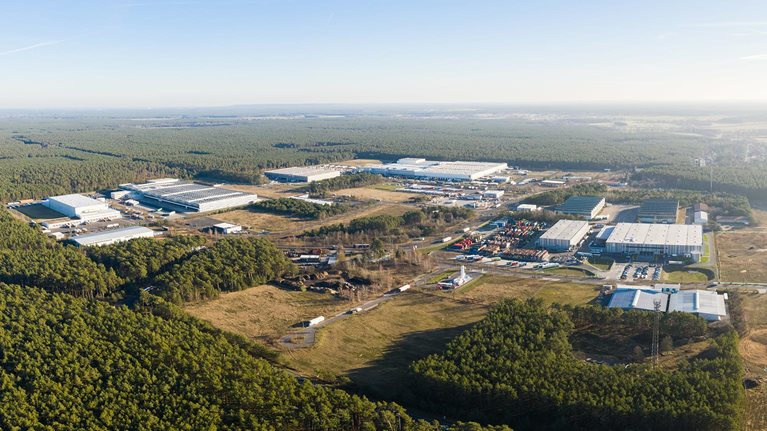Batteries are emerging as a critical ingredient in the transition to a more sustainable future because of their role in electrifying transportation and balancing power grids. Battery use is more than an opportunity to eliminate vehicular CO2 and NO2 emissions in a world grappling with climate change; scaling up production of battery-cell manufacturing capacity also offers significant value-creation opportunities for manufacturers, creates new jobs that pay well, and supports national economic growth.
We forecast that the market for battery cells will grow, on average, by more than 20 percent per year until 2030, reaching at least $360 billion globally. There is also a realistic scenario in which the market accelerates and hits $410 billion by 2030. That could happen if the industry follows the path of other renewable technologies such as solar and wind and enters a virtuous cycle in which increased scale drives down costs, which would accelerate growth in the market for electric vehicles (EVs). The rapid increase in demand would lead to the development of additional capacity along the entire value chain.
We estimate that a new battery-manufacturing plant with a total capacity of 30 to 40 gigawatt hours (GWh) per year could directly create as many as 3,200 jobs (exhibit). A similar number of jobs could be added indirectly through suppliers and construction as well as through the food and basic-services sectors. As a result, battery manufacturing could generate significant growth in GDP, especially if an ecosystem of related industries develops. This comes at a time when the automotive industry’s move to EVs has raised fears of lost jobs in car manufacturing and in the production of internal-combustion engines.

The biggest opportunities may be in Europe and North America, which have relatively immature markets but are likely to be centers of substantial future growth in EVs. By contrast, the battery value chain is well established in China, the world’s biggest market for EVs, and South Korea.
However, time is running out to compete in battery-cell manufacturing, the part of the value chain that holds most of the value-creation and macroeconomic opportunities. Based on past developments in comparable industries, such as wind-turbine manufacturing and in the tier-one automotive supplier industry, we believe the market will likely consolidate to about ten to 15 global cell-manufacturing players. This consolidation will be mostly driven by the importance of scale to reduce production costs and to compete on performance.
Would you like to learn more about the Battery Accelerator Team?
Winning companies will be those that act in the next few years. Meanwhile, governments can play an important role in facilitating industry growth in their respective countries, particularly through direct financial incentives but also by encouraging the development of local battery ecosystems. In this article, we discuss the barriers to scaling up cell manufacturing and what companies and governments can do to succeed in this space.
How companies can overcome scale-up challenges
Cell manufacturing, the most important step in the battery value chain, is estimated to account for up to 40 percent of battery-industry value creation by 2030. Manufacturers are investing billions of dollars in new battery-cell plants. If demand for battery cells grows at about 30 percent per year, the equivalent of about 90 additional gigafactories, as we know them today, will be needed in the next ten years worldwide.
Such a ramp-up in capacity is not trivial. It can lead to delays, as it recently did for some Asian companies building new factories in Europe. Challenges include securing funding, carrying out a billion-dollar project on budget, recruiting the right talent, and training hundreds of workers. Other potential issues include securing capacity of capable machinery producers as well as qualifying and developing a supply chain.
There are already six or seven at-scale cell manufacturers with ten or more years of track record and significant volumes and plants in several countries. Customers want options for sourcing batteries, but generally no more than three or four, so ten to 15 suppliers should suffice to supply the global market. Since more than 15 players have already announced their intention to begin cell manufacturing in Europe alone, we expect the industry to consolidate.
Companies face a variety of obstacles in the race to scale, but they can overcome those challenges using the following strategies.
Become a low-cost producer
OEMs’ key purchasing criteria for their tier-one suppliers are lowest cost, track record—for instance, on quality, yield, and reliability—and sustainability. In the coming years, building a competitive player capable of producing mass-market battery cells at less than $70 per kilowatt hour (kWh), which translates to EV battery packs cheaper than $100 per kWh, requires companies to reduce costs plant by plant and procure supplies at scale. The next few years will see large volumes, and OEMs tend to close long-term supply contracts with their battery suppliers as volumes increase. Plants are expected to continue getting larger, as in the past: the average plant size in 2016 was 2.5 GWh, which grew to 7.0 GWh by 2019. Costs are expected to continue their rapid decline, propelled by rapid learning rates.
In this environment, cell manufacturers should focus on building plants that will be cost competitive from day one (for example, producing at about $70 per kWh in 2025 versus about $100 per kWh today). Past experience in battery manufacturing—but also in other capital-expenditure-heavy industries such as solar cell manufacturing and nuclear power plants—shows that manufacturers can typically reduce costs 15 to 30 percent as they build each subsequent plant, applying what they have learned from the construction process. To do this, cell manufacturers must continuously improve yield while adopting new technologies, product chemistries, and innovative production processes.
Recruit skilled workers
Attracting top talent is critical to achieving cost leadership. Accomplishing this task will become increasingly challenging, however, because recent industry entrants have recruited much of the available global expertise in the field.
That said, these entrants also face several challenges in acquiring the right talent. First, they have already recruited much of the available global expertise in the field. Second, the fast growth of the industry means incumbents will act forcefully to retain their talent. Third, companies have recently been accused of poaching employees, and scrutiny of company practices is increasing. Finally, universities have been slow to ramp up programming to develop talent. At present, few universities offer relevant master’s programs in electrochemistry or electrochemical engineering. Competition for talent will be fierce, and cell manufacturers must respond by offering an attractive employee-value proposition, including a corporate purpose that resonates with recruits, opportunities for personal development, an attractive location, and competitive compensation and benefits.
Secure raw-materials supply
Later entrants into the cell-manufacturing market will find it difficult to secure sufficient access to important active and raw materials, such as cobalt and battery-grade nickel. Early players will lock in supply through long-term partnerships with active materials producers and mines. Some raw materials, such as nickel, could become scarce if demand growth outstrips the current supply pipeline. Environmental, social, and corporate governance requirements and geopolitics may further limit the number of suppliers and the volumes available for cell players.
In this context, cell producers can pursue several tactics. These include backward integration (for example, producing cathode active material, with metals potentially coming from an in-house recycling plant), securing supply through long-term partnerships with active materials producers and mines (for example, through purchasing agreements, joint ventures, or indirect agreements through automotive OEMs), and substitution of rare or critical elements with lower-performing ones, which may limit the manufacturer to lower-end applications.
Improve product sustainability
As automotive OEMs increase their focus on reducing greenhouse-gas emissions, more and more leading players are announcing ambitious decarbonization targets in line with the criteria of the Science Based Targets initiative.1 Such targets also require carmakers to reduce their upstream Scope 3 emissions, which are generated by the value chain of the materials and parts these manufacturers use. Depending on the model, the battery can account for up to 60 percent of all such emissions in a mass-market EV.
Battery manufacturers that want to continue supplying OEMs that have subscribed to such decarbonization targets will be required to significantly reduce the emissions included in their products. This means not only switching their own production processes—for example, from natural gas to electricity—and sourcing this electricity from renewables but also partnering with suppliers of raw materials and parts to ensure that these are extracted, refined, and manufactured with a low carbon-emissions footprint. Recycling used “end-of-life” batteries also plays an important role in improving the environmental footprint of battery reduction.
Form partnerships with customers
Cell manufacturers rely on securing offtake contracts with customers such as automotive OEMs to lock in production, allowing them to rapidly scale up plants. In securing these contracts, cell manufacturers should strive to form close partnerships with customers rather than just transactional relationships. Close partnerships could provide access to capital, enable more rapid joint development of technology and intellectual property, give both parties access to other partnerships (for example, to obtain access to raw materials), and increase transparency in areas such as sustainability.
What governments can do to support the industry
Battery ecosystems can be powerful tools for economic development, and governments that wish to capture the value-creation opportunity of batteries should consider moving quickly and forcefully to build them. For example, after a major cell producer began construction on a facility in Poland, another battery player followed suit, building a cathode plant nearby to supply materials. Governments have two main approaches to consider: maximizing value creation by enabling strong ecosystems, and taking steps to attract individual cell manufacturers.
On the first point, governments have several options. They could explore the potential of locally available resources (for example, lithium, nickel, and cobalt) and processing (refining and attraction of materials producers), facilitate value-chain collaboration through industry forums, and encourage talks between nearby EV producers and cell manufacturers. They could also learn how other industries have built collaboration (for example, oil-field services in Norway) and build and fund research and educational institutions to develop talent and advance technology.
To attract cell manufacturers, governments could establish a fast-track process for permitting and land leasing; make loans, grants, and guarantees to overcome capital limitations; and encourage and facilitate effective cross-border collaboration and trade with other suppliers and partners in the value chain.
The battery market is taking off. It is likely to grow into a massive industry within the next decade, creating thousands of jobs and serving as a national economic engine for decades to come. The steps industry entrants and policy makers take now will decide which players will prevail and which regions will reap the benefits of the battery-market opportunity.


